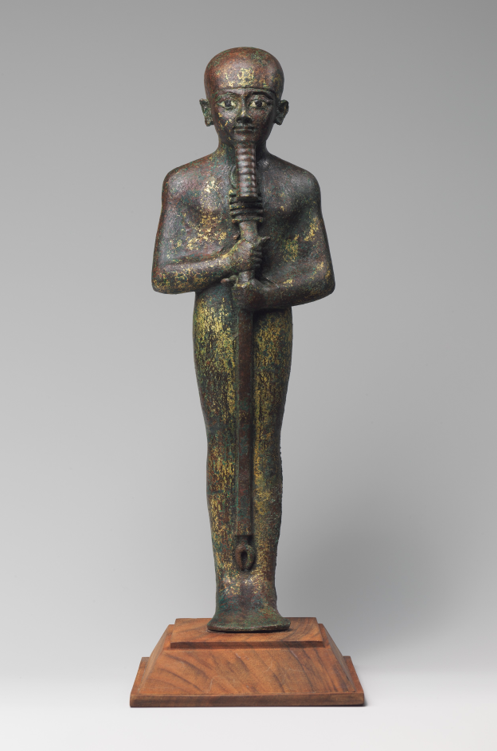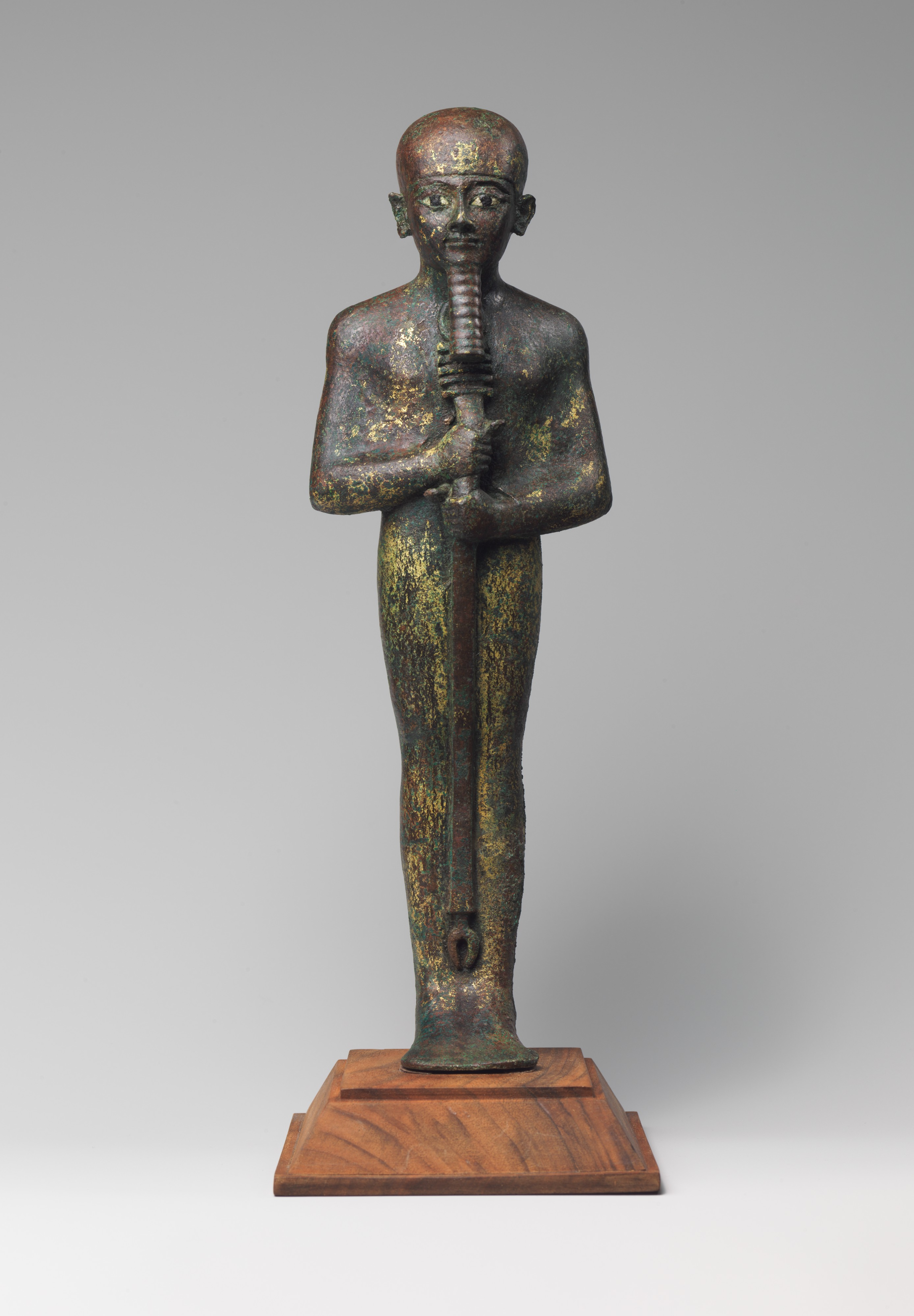
Name of Artifact: Statue of the God Ptah
Original Country: Egypt
Year of Production: Third Intermediate Period (ca. 1070-712 B.C.)
Location Now: The Louvre Museum, Paris, France
Background Information:
This spectacular statuette of the god Ptah is remarkable for its scale and exceptional preservation, as many such sculptures were melted down in antiquity for their metal. It was likely made for a temple, given its size and the precious materials used in its manufacture, such as glass inlaid eyes and gold leaf, traces of which are still visible on the surface. Cult temples during the Third Intermediate Period were centers of royal patronage, and pharaohs lavished them with high-quality images in gold, silver, and bronze, manufactured using creative techniques.
Ptah, a god known for listening to everyone’s prayers, is easily identifiable by his shrouded form, smooth cap, and distinctive scepter. He held multiple roles over three millennia of ancient Egyptian history, including “one who created through speech,” the “great leader of the craftsmen,” and the “lord of Memphis,” Egypt’s traditional capital city and Ptah’s principal residence. His charming visage here may also reflect another of his well-known characterizations: “benevolent of face.”
